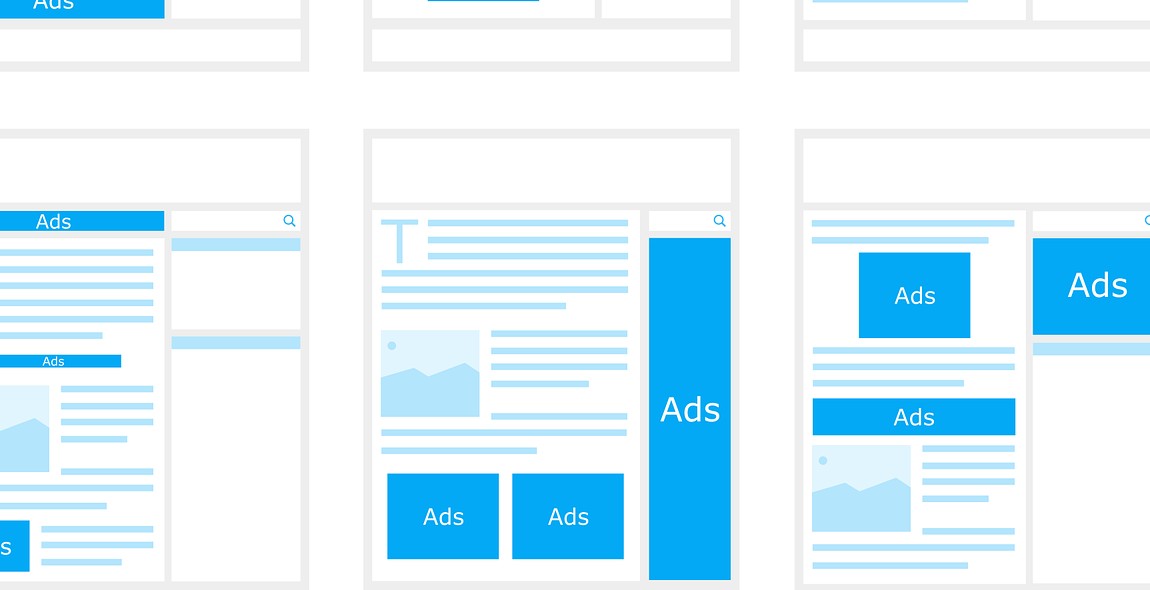How to Start a Successful Blog and Monetize It
If you have a passion for writing, sharing your ideas, or simply want to express yourself, starting a blog could be the perfect outlet for you. But, beyond just being a platform for self-expression, blogging can also be a lucrative business venture. In this article, we’ll explore the basics of starting a successful blog and monetizing it.
Why Start a Blog?
There are numerous reasons why someone might start a blog. For some, it’s a way to share their experiences or expertise on a particular topic. For others, it’s a creative outlet for writing or photography. And for many, it’s a way to connect with like-minded individuals and build a community around shared interests.
Whatever your reason for starting a blog, it’s important to remember that building a successful blog takes time, effort, and dedication. But with the right strategies and tools, you can turn your blog into a thriving business.
What is Blog Monetization?
Blog monetization refers to the process of making money from your blog. There are numerous ways to monetize a blog, including:
- Displaying ads
- Affiliate marketing
- Selling products or services
- Sponsored content
Each method has its own pros and cons, and the best approach will depend on your blog’s niche, audience, and goals.
In the following sections, we’ll explore the steps you need to take to start a blog and monetize it successfully.
Step 1: Choose Your Niche
Starting a successful blog requires careful planning and research. One of the first steps in creating a profitable blog is to choose a niche. A niche is a specific topic or area of interest that your blog will focus on.
What is a Blog Niche?
A blog niche is a specific topic or area of interest that your blog will focus on. It’s important to choose a niche that you are passionate about and knowledgeable in. Your niche should also be profitable and have a large enough audience to generate traffic and revenue.
How to Choose Your Niche
Choosing your niche can be a challenging task. To make the process easier, start by brainstorming a list of topics that you are interested in and passionate about. From there, research each topic to determine if it is profitable and has a large enough audience.
Consider your target audience when choosing your niche. Who do you want to reach with your blog? What are their interests and pain points? Choose a niche that will appeal to your target audience and provide them with valuable content.
Research Your Niche
Once you have chosen your niche, it’s important to research it thoroughly. This will help you understand your target audience, competitors, and potential revenue streams. Use keyword research tools to identify popular search terms related to your niche. This will help you create content that is optimized for search engines and will attract more traffic to your blog.
Research your competitors to identify what they are doing well and where you can improve. Look for gaps in the market that you can fill with your blog. Finally, research potential revenue streams for your niche, such as affiliate marketing, sponsored posts, and digital products.
| Key Takeaways: |
|---|
| 1. Choose a niche that you are passionate about and knowledgeable in. |
| 2. Consider your target audience and their interests when choosing your niche. |
| 3. Research your niche thoroughly, including your target audience, competitors, and potential revenue streams. |
Step 2: Set Up Your Blog
Now that you have decided on a niche for your blog, it’s time to start setting up your blog. This step involves choosing a blogging platform, a domain name, a web host, installing WordPress and choosing a theme.
Choose a Blogging Platform
The first thing you need to do is choose a blogging platform. There are many blogging platforms available, but WordPress is the most popular and widely used one. WordPress is user-friendly, customizable and has a lot of plugins and themes available to make your blog look and function the way you want it to.
Choose a Domain Name
Next, you need to choose a domain name. Your domain name is your blog’s address on the internet, so it’s important to choose a name that is easy to remember and relevant to your niche. You can purchase a domain name from a domain registrar like GoDaddy, Namecheap or Bluehost.
Choose a Web Host
You also need to choose a web host. A web host is a company that stores your blog’s files and makes it accessible on the internet. There are many web hosting companies available, but Bluehost is recommended by WordPress and is a popular choice among bloggers.
Install WordPress
Once you have chosen a domain name and a web host, you need to install WordPress. Bluehost makes it easy to install WordPress with just a few clicks.
Choose a Theme
Finally, you need to choose a theme for your blog. A theme is a template that determines the look and feel of your blog. There are many free and paid themes available, but it’s important to choose a theme that is responsive, easy to navigate and relevant to your niche.
Once you have set up your blog, it’s time to start creating content and promoting your blog to attract readers and monetize it.

Step 3: Create Quality Content
Creating quality content is the backbone of any successful blog. Quality content is informative, engaging, and relevant to your target audience. It should provide value and solve problems for your readers. Quality content is also SEO optimized and helps your blog rank higher in search engine results pages (SERPs).
What is Quality Content?
Quality content is content that is well-researched, well-written, and provides value to your audience. It is content that is unique, informative, and engaging. Quality content should be easy to read, well-structured, and visually appealing.
How to Write Quality Content
To write quality content, you need to know your target audience. You need to understand their needs, interests, and pain points. Once you know your audience, you can create content that speaks to them and provides them with solutions to their problems.
When writing quality content, it’s important to use proper grammar and spelling. Your content should be easy to read and well-structured. Use subheadings, bullet points, and images to break up your content and make it more visually appealing.
Types of Content
There are several types of content you can create for your blog:
- Blog posts
- Infographics
- Video tutorials
- Podcasts
- Case studies
- Interviews
- Product reviews
It’s important to diversify your content and try different types of content to see what resonates with your audience.
| Benefits of Quality Content |
|---|
| Increases website traffic |
| Improves search engine rankings |
| Builds trust and credibility with your audience |
| Generates leads and conversions |
By creating quality content, you can attract and retain a loyal audience, build your brand, and monetize your blog.

Step 4: Promote Your Blog
Creating a successful blog takes more than just publishing great content. You need to promote your blog to attract visitors and build a loyal readership. In this section, we’ll discuss three effective ways to promote your blog: social media promotion, guest blogging, and search engine optimization.
Social Media Promotion
Social media platforms are a great way to promote your blog and reach a wider audience. You can use platforms like Facebook, Twitter, Instagram, and LinkedIn to share your blog posts and engage with your followers. Make sure to optimize your social media profiles and use relevant hashtags to increase your visibility. You can also join relevant groups and communities to connect with other bloggers and potential readers.
Guest Blogging
Guest blogging is a great way to increase your blog’s exposure and attract new readers. Reach out to other bloggers in your niche and offer to write a guest post for their blog. In exchange, you can ask them to write a guest post for your blog. This way, you can tap into their audience and attract new readers to your blog.
Search Engine Optimization
Search engine optimization (SEO) is the process of optimizing your blog to rank higher in search engine results pages (SERPs). This involves using relevant keywords, optimizing your blog’s structure and content, and building high-quality backlinks. By optimizing your blog for search engines, you can attract organic traffic and increase your visibility online.
- Use relevant keywords in your blog posts and meta descriptions
- Optimize your blog’s structure and layout for easy navigation
- Build high-quality backlinks to your blog from other reputable websites
By following these three effective methods, you can promote your blog and attract more visitors. Remember to be consistent and patient, as building a successful blog takes time and effort.

Step 5: Monetize Your Blog
Now that you have established your blog and built an audience, it’s time to start making money from it. There are several ways to monetize your blog, including affiliate marketing, advertising, sponsored posts, and selling products or services.
Affiliate Marketing
Affiliate marketing is a popular way to earn money from your blog. It involves promoting other people’s products or services and earning a commission for every sale made through your unique affiliate link. To start with affiliate marketing, you need to join an affiliate program relevant to your niche and promote their products on your blog. You can place affiliate links within your blog posts, banners, or sidebar.
Advertising
You can also monetize your blog through advertising. This involves displaying ads on your blog and earning money based on the number of clicks or impressions. You can use Google AdSense, which is a popular ad network, or work with other ad networks or advertisers directly.
Sponsored Posts
Sponsored posts involve partnering with brands to create content that promotes their products or services and publishing it on your blog. You can earn money for these posts, either through a flat fee or a commission on sales. When partnering with brands, it’s important to disclose that the post is sponsored to maintain transparency with your audience.
Sell Products or Services
If you have a product or service that aligns with your blog’s niche, you can sell it directly to your audience. This can be anything from e-books, courses, physical products, or services. You can use your blog to promote and sell your products or services, and earn money directly from your audience.
By using one or more of these monetization strategies, you can turn your blog into a profitable business and earn a sustainable income.
Conclusion
Starting a successful blog and monetizing it can be a challenging but rewarding experience. By following the steps outlined in this article, you can create a blog that attracts a loyal audience and generates revenue.
Remember these key takeaways:
- Choose a niche that you are passionate about and that has a large audience.
- Create high-quality content that provides value to your readers and helps you stand out from the competition.
- Promote your blog through social media and other channels to attract a larger audience.
- Monetize your blog through various methods, including affiliate marketing, sponsored posts, and advertising.
- Be patient and persistent – building a successful blog takes time and effort.
With the right approach and mindset, you can turn your blog into a profitable business that allows you to share your passion with the world and make a living doing what you love.
| Related Articles: | 5 Tips for Writing Compelling Blog Posts | 10 Ways to Promote Your Blog and Increase Traffic |
